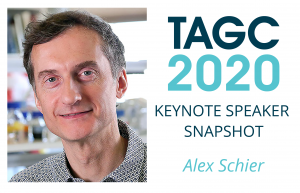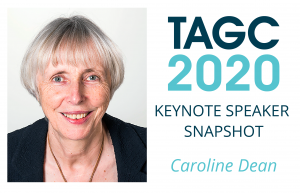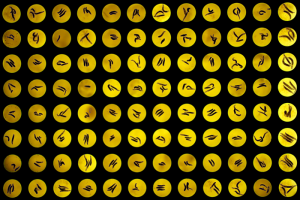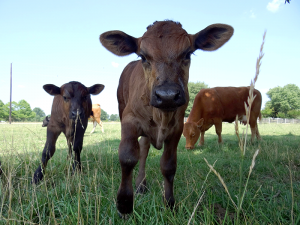Enter your address to receive notifications about new posts to your email.
Articles by Sarah Bay (43 results)
-
TAGC Keynote Speaker Snapshot: Sally Otto
Get to know the TAGC 2020 Keynote Speakers through our interview series. Sarah (Sally) Otto is known for her theoretical studies of how biological systems evolve. Otto investigates the selective forces acting on genetic systems (recombination, ploidy level, gene duplications) and mating systems (sexual vs asexual reproduction, sexual selection, floral reproductive strategies). Complementing this approach,…
-
TAGC Keynote Speaker Snapshot: Alex Schier
Get to know the TAGC 2020 Keynote Speakers through our interview series. Alex Schier obtained his PhD in Walter Gehring’s lab at the Biozentrum Basel. He spent his postdoc in Wolfgang Driever’s lab at Harvard, where he screened for and characterized mutants affecting zebrafish development. He started his lab in 1996 at the Skirball Institute…
-
TAGC Keynote Speaker Snapshot: Caroline Dean
Get to know the TAGC 2020 Keynote Speakers through our interview series. Caroline Dean has been a project leader at the John Innes Centre Norwich since 1988. Her work on seasonal timing mechanisms in plants has led into a detailed mechanistic analysis of the regulation of the floral repressor FLC in Arabidopsis. FLC transcription is…
-
“Predicting” the future: how genomic prediction methods anticipated technology
A landmark paper published in GENETICS founded the field of genomic prediction before the requisite technology was available. When a new technology is developed, it can allow scientists to make great strides in addressing longstanding questions. Occasionally, however, researchers think so critically about a knowledge gap in their field that they’re able to propose a…
-
Family tree of 400 million people shows genetics has limited influence on longevity
Study of huge Ancestry.com pedigree suggests assortative mating may have inflated previous estimates of life span heritability. Although long life tends to run in families, genetics has far less influence on life span than previously estimated, according to a new analysis published in GENETICS. Ruby et al. used a data set of over 400 million…
-
Using fruit flies to find rare disease treatments
An automated drug screening approach gives insight into rare NGLY1 deficiency. Sometimes, diagnosing and treating an illness is straightforward. Other times, the diagnosis is challenging while the treatment is simple—or vice versa. In the case of a rare disease like NGLY1 Deficiency, both diagnosis and treatment can feel unreachable. The complex challenges of rare diseases…
-
An updated tool for finding the footprints of selection
diploS/HIC uses machine learning to identify selective sweeps in unphased data. A set of footprints can tell us a lot about the creature that left them—without requiring us to see the creature itself. Footprints can suggest the animal’s size, weight, and stride, and from there, we can extrapolate even more information. Much like soft sand…
-
Heights and pitfalls in detecting polygenic adaptation
Identifying signatures of polygenic adaptation is getting easier—but a commentary calls for caution in drawing conclusions. If you’ve ever wished for a stepstool so you could see the stage at a crowded concert, or, conversely, if you’re tired of being asked “How’s the weather up there?”, you’ve likely pondered what makes some of us tall…
-
Behind the Cover: Genetic ancestry in Colombia
Over three centuries, as many as a million enslaved people were shipped to the Colombian port of Cartagena. From this hub of the slave trade, European colonists took Africans to labor in many places across the Americas, including the gold mines of the Chocó region. Today, people from Chocó often proudly identify as Afro-Colombian, while…
-
How the fruit fly’s daily rhythms led to big discoveries—and a Nobel Prize
The unassuming fruit fly has paved the way for another big scientific win: on October 2nd, the Nobel Assembly awarded the 2017 Nobel Prize in Physiology or Medicine to Jeffrey C. Hall, Michael Rosbash, and Michael W. Young for their discoveries of the molecular mechanisms behind circadian rhythms. These biologists have spent their careers studying…
-
To make an embryo, you gotta break some mitochondrial DNA
Over twenty years ago, somatic cell nuclear transfer (SCNT) let scientists successfully clone the first mammal—Dolly the sheep. Despite advances since then, the efficiency of this process remains low. In the July issue of G3, Srirattana and St. John report a method to deplete cattle donor cells of mitochondrial DNA and efficiently generate blastocysts from…











